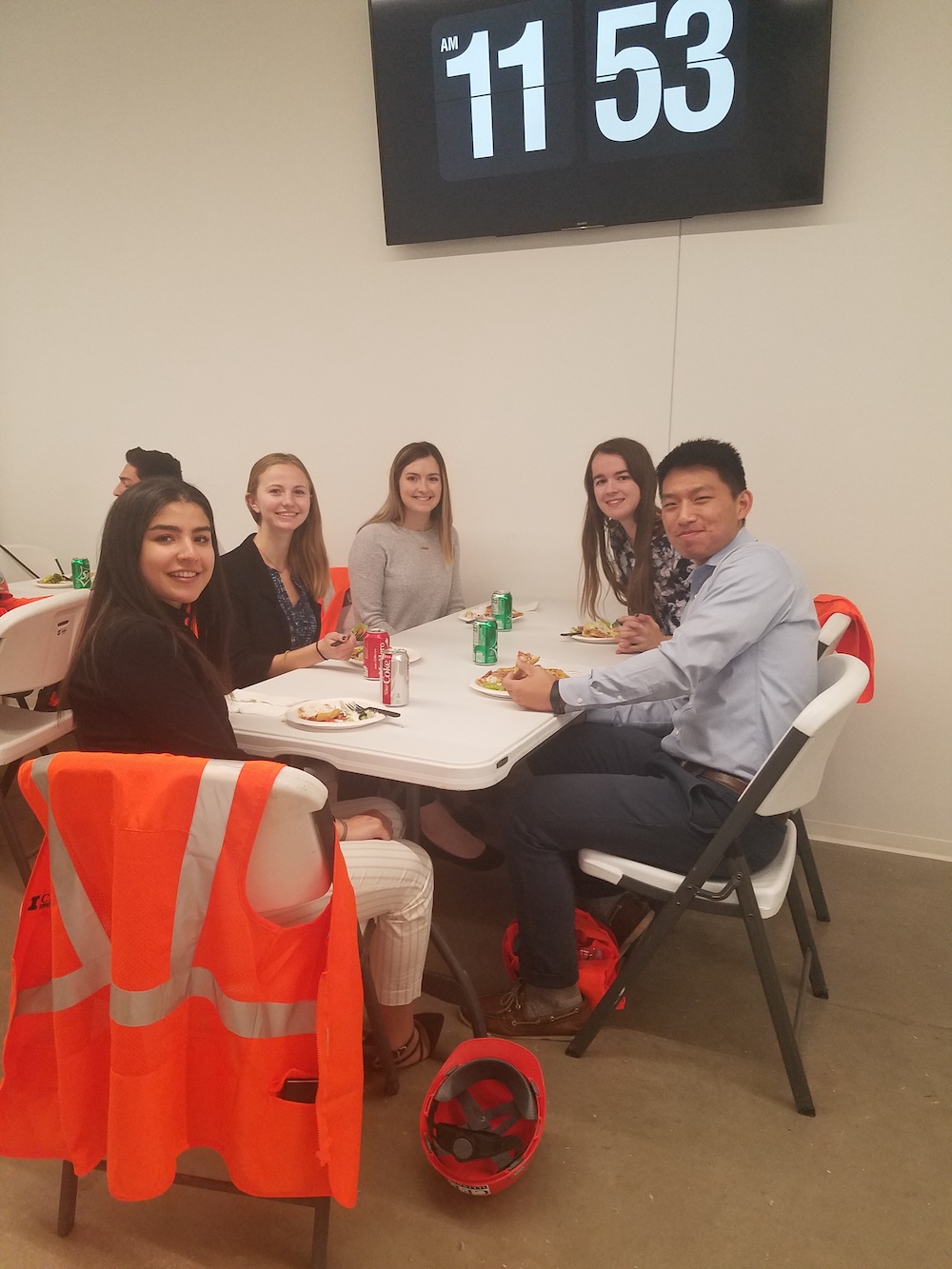The Global Leaders in Construction Management students made their first group visit this academic year to Skender’s Manufacturing Plant in Chicago, Illinois. Skender is revolutionizing the construction industry by vertically integrating design, construction, and manufacturing operations. This turnkey method allows Skender to design and fabricate modules for the residential and healthcare markets. The highly efficient modular building process, completed almost entirely in a climate-controlled environment, increases quality and safety, reduces price, eliminates weather risk and significantly reduces delivery schedule. This advanced manufacturing plant is located in the southwest side of Chicago and it opened in summer 2019. Skender has partnered with developer Sterling Bay for 10 affordable rate, three-flat apartment buildings in Chicago, which would also be their first modular building project.

We started our factory visit with a presentation given by Skender’s Chief Executive Officer, Mr. Mark Skender, Chief Design Officer, Mr. Timothy Swanson, and President of Manufacturing, Mr. Pete Murray about the vision and mission of their new business venture and the future of the modular industry.

After understanding the concept behind this manufacturing facility, our group divided into two groups to tour their manufacturing assembly line and a few of their prototypes. All the students were asked to look at these modules as manufacturing “products” and not just regular construction since this thought process is what inspired Skender to enter into the modular industry. Skender has partnered with companies like USG, Kingspan and Kohler to supply products directly to their manufacturing plant instead of going through the traditional construction procurement process. All the design detailing was thought out by their in-house design team from a manufacturing point of view in order to provide value for the product. Skender’s Three Flats prototype, shown in the image below, is built out with HSS or tube steel members. To connect these modules on-site, Skender uses a unique “vector-block” connection at the corners of the modules which have slotted connections. All of the plumbing lines are routed via a single chase in order to maximize design efficiency. Skender has partnered with the startup ‘Manufacton’ to have an integrated cloud solution for prefab production, material and supply chain management. Skender utilizes lasers for accuracy during fabrication and the entire assembly line is paperless.

After the prototype visit, we got to see the assembly line where the modules are fabricated. The assembly line has five stations to assemble and fabricate each module. If all the materials are in the factory, Skender can fabricate a fully furnished module within 7 days. This helps them to speed up the construction time and minimize work on site. Skender also has non-structural modules that are utilized in the healthcare market. These modules are made up of cold-formed steel which a steel chassis. Once built, these modules or pods are shipped to the site and installed in place.

After the tour, Skender had provided Lou Malnati’s pizza and salad for all the students. Five junior students got a chance to join the GLCM group for the factory visit in order to interact with the current class and gather experience with site visits.

We also got a chance to meet Khalid Mahmoud, U of I alum and current Project Engineer at Skender. He shared his experience of working at Skender and his current projects. Two of the GLCM students, Akash Jain and Christopher Meilinger, stayed after the tour to discuss the construction plan with Skender for the Solar Decathlon competition. Skender has partnered with Illinois Solar Decathlon to build a 3 module house in the City of Champaign for the U.S. Department of Energy Solar Decathlon competition.

This was a very exciting visit for the entire group since this factory is one of a kind. We would like to thank everyone at Skender for hosting us and showing how are they changing the construction industry.
Blog by Akash Jain
